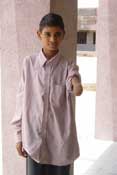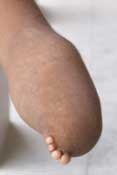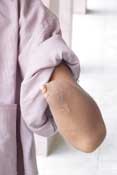
The majority of our students' disabilities are caused by Polio. A certain number of them suffer from genetic disabilities. We also have a small group of amputees and burns victims.
Polio
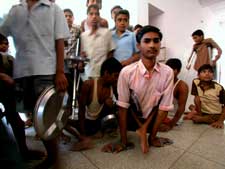
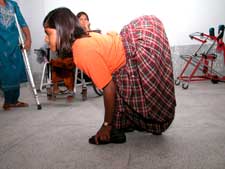
![]()
Polio (Poliomyelitis) is a highly infectious viral disease. 1 in 200 infections leads to permanent paralysis of limbs, most often the legs. Polio generally affects under 5 year-olds, therefore most of our students have been disabled from an extremely young age.
Once Polio strikes, there is no cure; damage to limbs is permanent and irreversible.
![]()
Though tremendous progress has been made in the global fight against polio since 1988, when the World Health Assembly resolved to eradicate the disease, India continues to be a particular hot spot, second only behind Nigeria, in diagnosed Polio cases world-wide.
![]()
A twice yearly vaccination program is undertaken by the Indian Government, however due to the dispersed rural nature of the population in Rajasthan, many children still slip through the net with dire consequences.
![]()
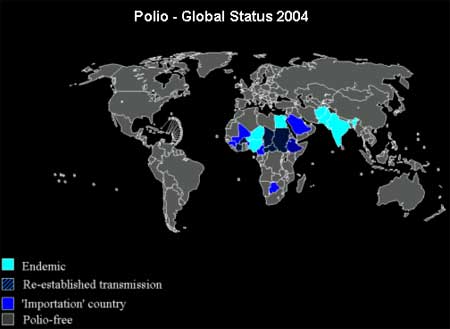
![]()
Children who suffer a permanent paralysis of the limbs due to Polio require an extensive program of rehabilitation. This may include physiotherapy, braces, special shoes, calipers, and in many cases, orthopaedic surgery. A team effort from doctors, physiotherapists, occupational therapists, and psychologists is required to get each child through the ordeal.
![]()
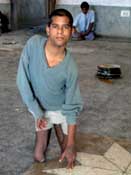
![]()
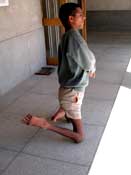
![]()
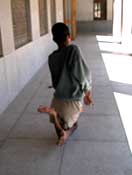
![]()
An ongoing healthy standard of living is very important to our children. A well-balanced diet, a thorough exercise regime, and appropriate healthcare can help manage the ongoing impact
of Polio, as well as help in later life should the child be amongst the 25% of sufferers that will develop Post Polio Syndrome (PPS).PPS symptoms include fatigue, slow-progressive muscle weakness, muscle and joint pain, and muscular atrophy. PPS can strike polio survivors anywhere from 10 to 40 years after their recovery from polio.

![]()
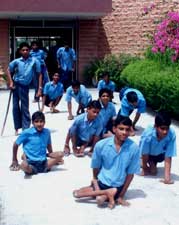 Fortunately,
there is no effect of the Polio virus on the brain, so these children remain
completely able to take part in a normal school curriculum and achieve highly
in life.
Fortunately,
there is no effect of the Polio virus on the brain, so these children remain
completely able to take part in a normal school curriculum and achieve highly
in life.
![]()
The SKSN Limb Workshop fits children with the appliances they require, whether it be braces or calipers, and the school provides funding to enable the children to visit specialist prosthetic units, should an artificial limb be required.
![]()
Burns
![]()
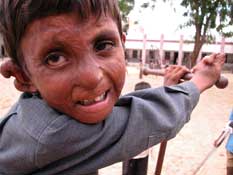
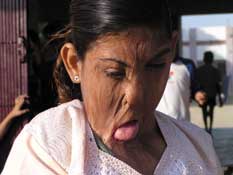
![]()

SKSN has a small number of children who are victims of severe burns. The school provides support for the children as they go through operations to provide the necessary plastic surgery to correct their disfigurements. Our psychologist counsels the students to recover from their traumas, and to learn to cope with every day life despite the gruesome nature of their injuries.
![]()
Amputees
![]()
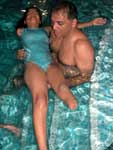
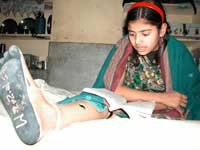
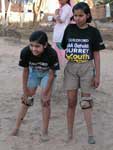
![]()
There are a number of children at SKSN who have had their limbs amputated in various accidents. Sangeeta Vishnoi, shown with Arun Patel of Polio Children on her 2003 visit to London with the Girls Mini Games team, got herself tangled up in a high-powered electric cable which snapped while she and a group of children were playing close-by. Her right arm and lower left leg were so severely damaged that amputation was the only option.
![]()
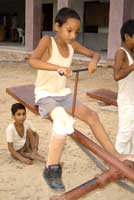
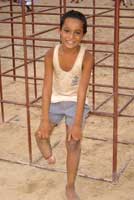
SKSN supports the children as they have prosthetic limbs fitted. Initially, all amputees had the standard issue 'Jaipur Foot' fitted, a very basic prosthetic supplied by the government which is completely inflexible and often grates the skin. However, one of our partners Take Action obtained a number of superior quality artificial limbs from a workshop in Delhi, and some of our students have now been fitted with these.
Ongoing rehabilitation, physiotherapy and counselling are also provided to these students as required.
Genetic Disabilities
Genetic disabilities have left some of our students with limbs which are not fully formed; partially grown arms or legs. These deformities are unfortunately more highly prevalent in India than in the west, due to contaminated water supplies and poisonous pesticides.
